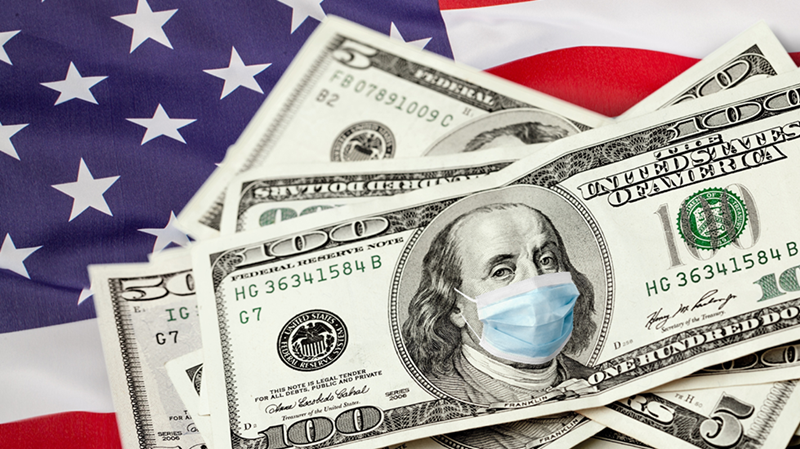
Last year, the National Institutes of Health – Anthony Fauci’s employer – doled out $30 billion in government grants to roughly 56,000 recipients. That largess of taxpayer money buys a lot of favor and clout within the scientific, research, and healthcare industries.
However, in our breaking investigation, we found hundreds of millions of dollars in payments also flow the other way. These are royalty payments from third-party payers (think pharmaceutical companies) back to the NIH and individual NIH scientists.
We estimate that between fiscal years 2010 and 2020, more than $350 million in royalties were paid by third-parties to the agency and NIH scientists – who are credited as co-inventors.
Because those payments enrich the agency and its scientists, each and every royalty payment could be a potential conflict of interest and needs disclosure.
In the above examples, although we know the number of payments to each scientist, we still don’t know how much money was paid – because the dollar figure was deleted (redacted) from the disclosures.
It’s
been a struggle to get any useful information out of the agency on its
royalty payments. NIH is acting like royalty payments are a state
secret. (They’re not, or shouldn’t be!)
Consider how NIH is using taxpayer money to try and keep taxpayers ignorant and in the dark:
1. NIH defied the federal Freedom of Information Act law and refused to even acknowledge our open records request for the royalty payments. We filed our FOIA last September.
2. NIH used expensive taxpayer-funded litigation to slow-walk royalty disclosures (releasing the oldest royalties first). Although the agency admits to holding 3,000 pages, it will take ten months to produce them (300 pages per month). With Judicial Watch as our lawyers, we sued NIH in federal court last October.
3. NIH is heavily redacting key information on the royalty payments. For example, the agency erased 1. the payment amount, and, 2. who paid it! This makes the court-mandated production virtually worthless, despite our use of the latest forensic auditing tools
NIH is essentially telling you, the taxpayer, to pay up and shut up. They'll run things. They have forgotten that they work on behalf of the American people.
-
Anthony Fauci, director of the National Institute of Allergy and Infectious Diseases (NIAID) and the highest-paid federal bureaucrat, received 23 royalty payments. (Fauci’s 2021 taxpayer-funded salary: $456,028).
-
Francis Collins, NIH director from 2009-2021, received 14 payments. (Collins’ 2021 taxpayer-funded salary: $203,500)
-
Clifford Lane, Fauci’s deputy at NIAID, received 8 payments. (Lane’s 2021 taxpayer-funded salary: $325,287)
In the above examples, although we know the number of payments to each scientist, we still don’t know how much money was paid – because the dollar figure was deleted (redacted) from the disclosures.
It’s
been a struggle to get any useful information out of the agency on its
royalty payments. NIH is acting like royalty payments are a state
secret. (They’re not, or shouldn’t be!)
Consider how NIH is using taxpayer money to try and keep taxpayers ignorant and in the dark:
1. NIH defied the federal Freedom of Information Act law and refused to even acknowledge our open records request for the royalty payments. We filed our FOIA last September.
2. NIH used expensive taxpayer-funded litigation to slow-walk royalty disclosures (releasing the oldest royalties first). Although the agency admits to holding 3,000 pages, it will take ten months to produce them (300 pages per month). With Judicial Watch as our lawyers, we sued NIH in federal court last October.
3. NIH is heavily redacting key information on the royalty payments. For example, the agency erased 1. the payment amount, and, 2. who paid it! This makes the court-mandated production virtually worthless, despite our use of the latest forensic auditing tools
NIH
is essentially telling you, the taxpayer, to pay up and shut up.
They'll run things. They have forgotten that they work on behalf of the
American people.
In 2005, the Associated Press successfully used FOIA to crack open the NIH royalty database. They found 900 scientists collected $9 million in royalties. Furthermore, 51 scientists NIH royalty recipients were then working on experiments involving inventions for which they were already being paid.
Among the 51 scientists doing experiments involving inventions for which they were being paid royalties was Anthony Fauci, then- and current director of the National Institute of Allergy and Infectious Diseases. Fauci received $45,072.82 between 1997 and 2004 for a patent license on an experimental AIDS treatment. NIH funded that treatment with $36 million.
To this day, Fauci continues to receive NIH-approved perks without a lot of accountability. For example, in February 2021, Fauci received a $1 million prize from the Dan David Foundation in Israel for “speaking truth to power” during the Trump administration.
Today, NIH is a revolving door of tens of billions of dollars in government grant-making coupled with hundreds of millions of dollars in private – non-transparent – royalty payments.
There needs to be a lot more sunshine on this potentially unholy alliance.
When a federal bureaucrat pops up on television giving us health instructions, who has paid them and for what research and technology? When a patient agrees to a clinical trial or experimental treatment, what financial interests are involved?
Rather than relentless redactions and prolonged court battles, it’s past time for the government to disclose royalty payments as a matter of routine.
NIH needs to come clean with the American people and open the books on the line-by-line royalty payments to the agency and its scientists.
Note: We reached out to NIH for comment and received no response.